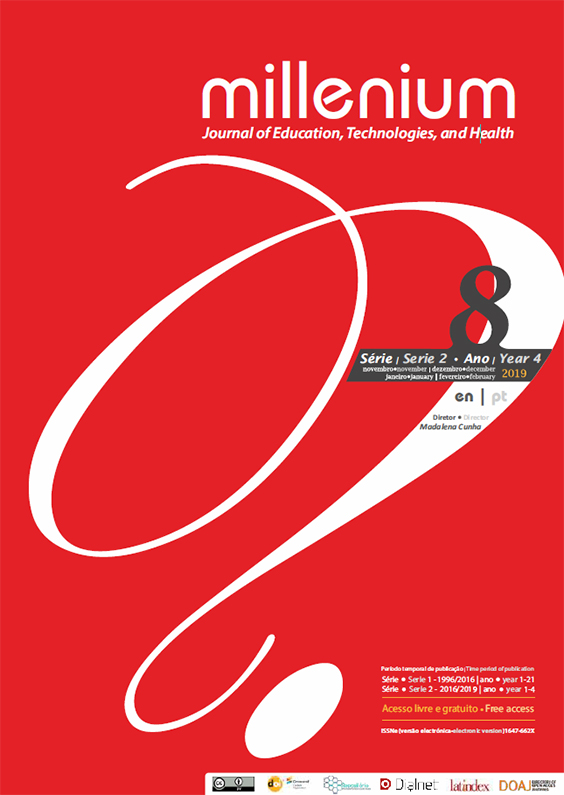Wastewater treatment of biodiesel production using persulphate ion as an oxidant.
DOI:
https://doi.org/10.29352/mill0208.02.00199Keywords:
Potassium monopersulfate, Chemical oxidation, Chemical Oxygen Demand, Wastewater from biodiesel purificationAbstract
Introduction: The production of biodiesel produces a highly polluting effluent, because presents high values of Chemical Oxygen Demand (COD), oils and fats, among other contaminants. Sodium persulphate is a powerful oxidant (Eº = 2.1V). In addition to the direct oxidation that is favored in alkaline media, it can be induced by photolytic processes, catalytic and / or catalytic photos forming sulphate radicals (Eº = 2.6 V) thus providing reaction mechanisms with free radicals like hydroxyl radicals.
Methods: In this work the effect of the potassium monopersulphate compound (2KHSO5.KHSO4K2SO4), (Oxone) on the removal of COD in residual water from the biodiesel purification step was tested.
Results: The tests, direct oxidation at alkaline pH and catalytic oxidation with cobalt ions, Co(II), showed that the former, for Oxone concentrations of 1.00x10-2 M and 4.00x10-3 M, were not effective because no decomposition occurred, for reaction times over three hours, thus not occurring removal of COD. In the catalytic assays combinations were tested, varying between 5.00x10-3 M and 7.50x10-2 M for the oxidant and 0.10 μM and 1.00 μM for the catalyst. The complete decomposition of the oxidant was always verified between 15 min. and 2 h. The tests with the lowest concentration of cobalt showed COD removal rates around 20% and the highest one reached 60%.
Conclusions: The most favorable assay achieves significant COD removals, but not enough for the effluent to be discharged in the hydric medium according the portuguese legislation.
Downloads
References
APHA (2012). Standard Methods for the Examination of Water and Wastewater, American Public Health Association, Washington DC, USA.
Borralho, T., Pardal, A., Carvalho; F., Almeida; A., Baltazar; A. (2015). Caracterização e Tratamento de Água Residual Proveniente da Produção de Biodiesel - Estudo Preliminar. 1st National Congress of Higher Schools of Agriculture. Bragança, 2-3 d December.
Chen, X., Wang, W., Xiao, H., Hong, C., Zhu, F., Yao, Y., Xue, Z. (2012). Accelerated TiO2 photocatalytic degradation of acid orange 7 under visible light mediated by peroxymonopersulphate. Chemical Engineering Journal, 193-194, 290-295.
Chi, F.L., Zhou, G.O., Song, B., Yang, B., Lv, Y.H., Ran, S.L., Li, C.G. (2016). CoTiO3 nanoparticules as a highly active heterogeneous catalytic of monoperoxymonpersulphate for the degradation of organic pollutants under visible- light illumination. Journal of Nano Research, 42, 73-79.
Decree- Law 236/98 of 1st August.
Guan, Y.H, Ma, J., Li, X.C, Fang, J.Y., Chen, L.W. (2011). Influence of pH on the Formation of Sulfate and Hydroxyl Radicals in the UV/Peroxymonosulfate System. Environmental Science & Technology, 45:9308–9314.
Hu, P., Long, M. (2016). Cobalt-calatysed sulphate radical-based advanced oxidation a review on heterogeneous catalysis and applications. Applied Catalysis B: Environmental, 181, 103.
Hussain, H., Green I.R., Ahmed, I. (2013). Journey describing applications of oxone in synthetic chemistry. Chemical Reviews, 113, 3329-3371.
Oh, W.D., Z. Dong, Lim, T.T. (2016). Generation of sulphate radical through heterogeneous catalysis of organic contaminants removal: Current development, challenges and prospects. Applied Catalysis B: Environmental, 194, 169.
Pardal, A., Borralho, T., Carvalho, F., Chaves H., Baltazar, A., Catarro, J. (2014). Study of Integrated Chemical Physical Processes for Biodiesel Wastewater Treatment. 9º IWA World Water Congress – 20th-26th Setember, Lisboa.
Rattanapan, C., Sawain, A., Suksaroj, T., Suksaroj, C. (2011). Enhanced efficiency of dissolved air flotation for biodiesel wastewater treatment by acidification and coagulation processes. Desalination, 280 (1–3) 370-377.
Rivas, F.J., Gimeno, O., Borralho, T. (2012). Aqueous pharmaceutical compounds removal by potassium monopersulphate. Uncatalyzed and catalyzed semicontinuous experiments”. Chemical Engeneering Journal, 192, 326-333.
Rodriguez- Chueca, J., Amor, C., Silva, T., Dionysiou, D.D., Li Puma, G., Lucas, M.S., Peres, J.A. (2017). Treament of winery wastewater by sulphate radicals: HSO5-/ transition metal/UV-A- LEDS. Chemical Engineering Journal, 310, 473-483.
Solís, R. R. (2017). Photolytic Oxidation of aqueosus herbicides with radiation of low energy. Application of catalyts, ozone and peroxid promoters. Tesis doctoral. Departamento de Ingeniería química y Química Física. Universidad de Extremadura (Espãna).
Sun, J., Li, X., Feng, J., Tian, X. (2009). Oxone/Co2+ oxidation as an advanced oxidation process: comparison with traditional Fenton oxidation for treatment of landfill leachate, Water Research, 43 4363–4369.
Wang, H. R., Chu, W. (2012). Photo-assisted degradation of 2,4,5-trichlorophenoxyacetic acid by Fe(II)-catalyzed activation of Oxone process: The role of UV irradiation, reaction mechanism and mineralization . Applied Catalysis B: Environmental, 123-124(23), 151-161.
Wei, G., Liang, X., He, Z., Liao, Y., Xie, Z., Liu, P., Ji, S., H. He, H., Li, D., Zhang, J. (2015). Heterogeneous activation of Oxone by substituted magnetites Fe3MxO4 (Cr, Mn Co, Ni) for degradation of Acid Orange II at neutral pH. Journal of Molecular Catalysis A: Chemical, 398, 86–94.
Yu, J., Cui,J., Zhang, C. (2010). A simple and effective method for α-hydroxylation of β-dicarbonyl compounds using oxone as an oxidant without a catalyst. European Journal of Organic Chemistry 7020–7026
Downloads
Published
How to Cite
Issue
Section
License
Authors who submit proposals for this journal agree to the following terms:
a) Articles are published under the Licença Creative Commons (CC BY 4.0), in full open-access, without any cost or fees of any kind to the author or the reader;
b) The authors retain copyright and grant the journal right of first publication, allowing the free sharing of work, provided it is correctly attributed the authorship and initial publication in this journal;
c) The authors are permitted to take on additional contracts separately for non-exclusive distribution of the version of the work published in this journal (eg, post it to an institutional repository or as a book), with an acknowledgment of its initial publication in this journal;
d) Authors are permitted and encouraged to publish and distribute their work online (eg, in institutional repositories or on their website) as it can lead to productive exchanges, as well as increase the impact and citation of published work
Documents required for submission
Article template (Editable format)





